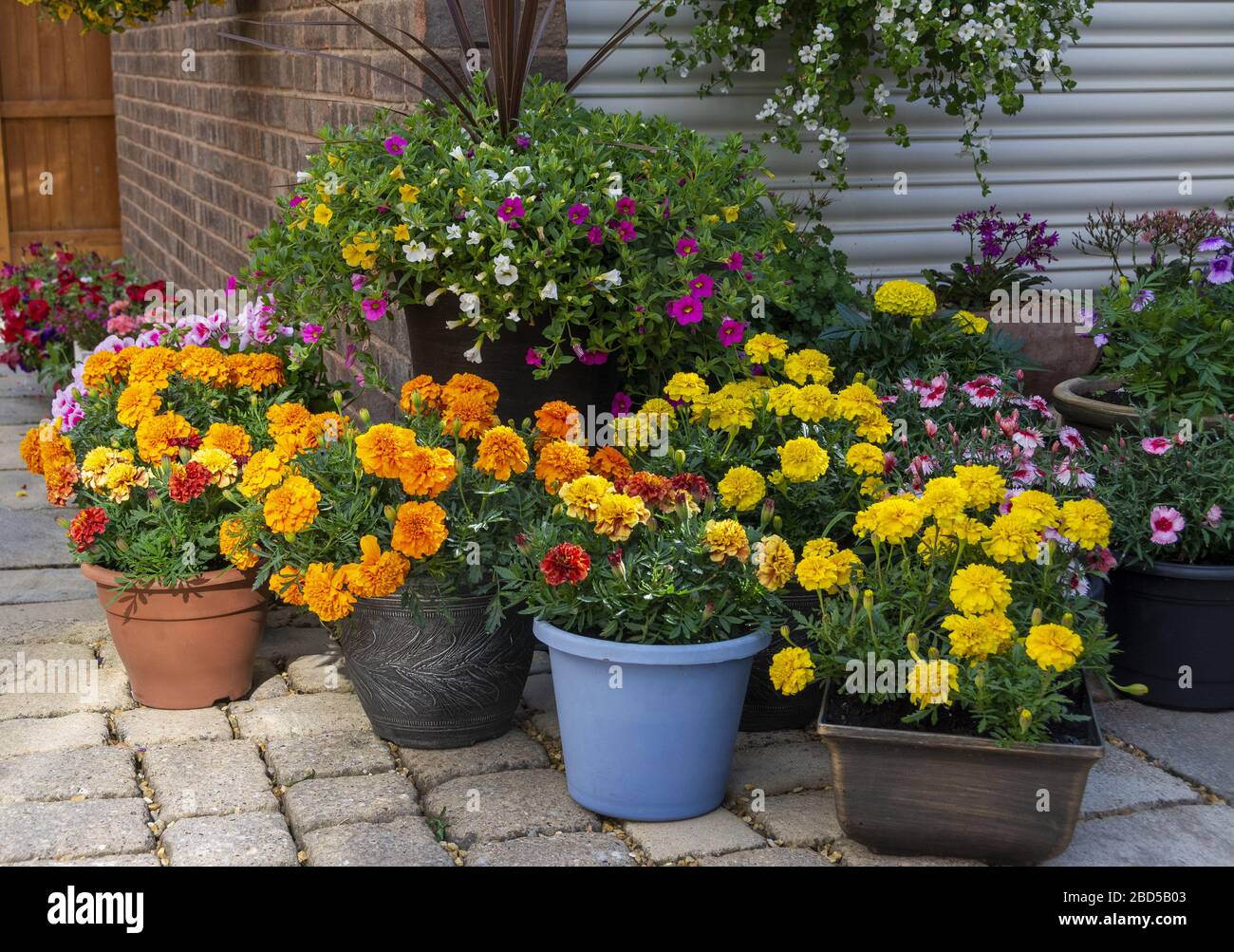
Marigold, the bold flower that aims to please and one you should consider planting in Desert Aire gardens. They do especially well in pots. Just remember that our desert sun can be tough when plants are young, so moist fertile soil is a must. I add a little peat and compost to hold in the moisture. Mine do well on the East side of the house even without much care, where it's shady in the afternoon. Just be careful not to place pots too close to the driveways where heat (in the morning) can build up rapidly. But done right, you will be blessed with a gorgeous display. Marigolds come in vibrant colors--yellows, oranges, reds and maroons--with sizes ranging from 6 inches to an amazing 2 feet tall.
Swedish botanist Carl Linnaeus officially recorded marigolds in 1753, but records exist dating back to the Aztecs in the 1500s. Today the flower is used in the Mexican ‘Day of the Dead’ celebration to honor those who have died. Elsewhere, in Nepal for instance, marigolds play a role in worship and rituals, while in Thailand and India, marigold garlands are woven for weddings, festivals, and religious events.
In the U.S. some marigolds are used to flavor and color food, and have reported health benefits, such as alleviating cramps and aiding digestion. Relief for nausea, stomach ulcers and menstrual
discomfort is reported. Marigold eases headaches and can help one sleep too. A tea can be made for cold compresses and used in baths
for relaxation and as an anti-inflammatory. I would warn though that the details of how this is done should be thoroughly researched. Try at your own risk of course, as the saying goes. Online there is a warehouse of information.
Perfume makers further use the marigold's oil to make a desirable scent. The flower is quite strong actually, a bit smelly at first sniff, but at just the right amount it really works. I recall liking a perfumed cream made by Avon years back that I believe was made with marigold. I've missed it over the years. Songs, poems, and stories all capture this flower's beauty as well.
Native to North and South America, marigolds come in annual and perennial varieties. For non-gardeners out there, annual flowers have one life cycle. The seeds are sowed in spring, the plant blooms, and then dies, whereas perennial plants live more than two years. I have only seen annual marigolds in local nurseries here, but frugal gardeners can easily grow marigolds from seed. If you plant in pots, many will reseed the following season on their own from the seed pods left behind.
Most marigolds have a strong, unattractive scent, as pointed out above, but there are some species that are bred to be scentless. However, I’m fine with the “stinky” variety, since I've learned that a little in the right amount does wonders. I also like that scented marigolds are a natural deterrent to deer, rabbits, rodents--and insects in particular. This includes white flies, nematodes, mosquitoes, Mexican bean beetles, squash bugs (oh my, a nemesis of mine), thrips, tomato horn worms, and more are supposedly repelled. So, plant away, I say.
Just protect from our hot sun. Marigolds prefer afternoon shade here and plenty of
moisture. Happy spring gardening everyone! “It does not matter if you are a rose or a lotus or a
marigold. What matters is that you are flowering.” (Rajineesh)
No comments:
Post a Comment